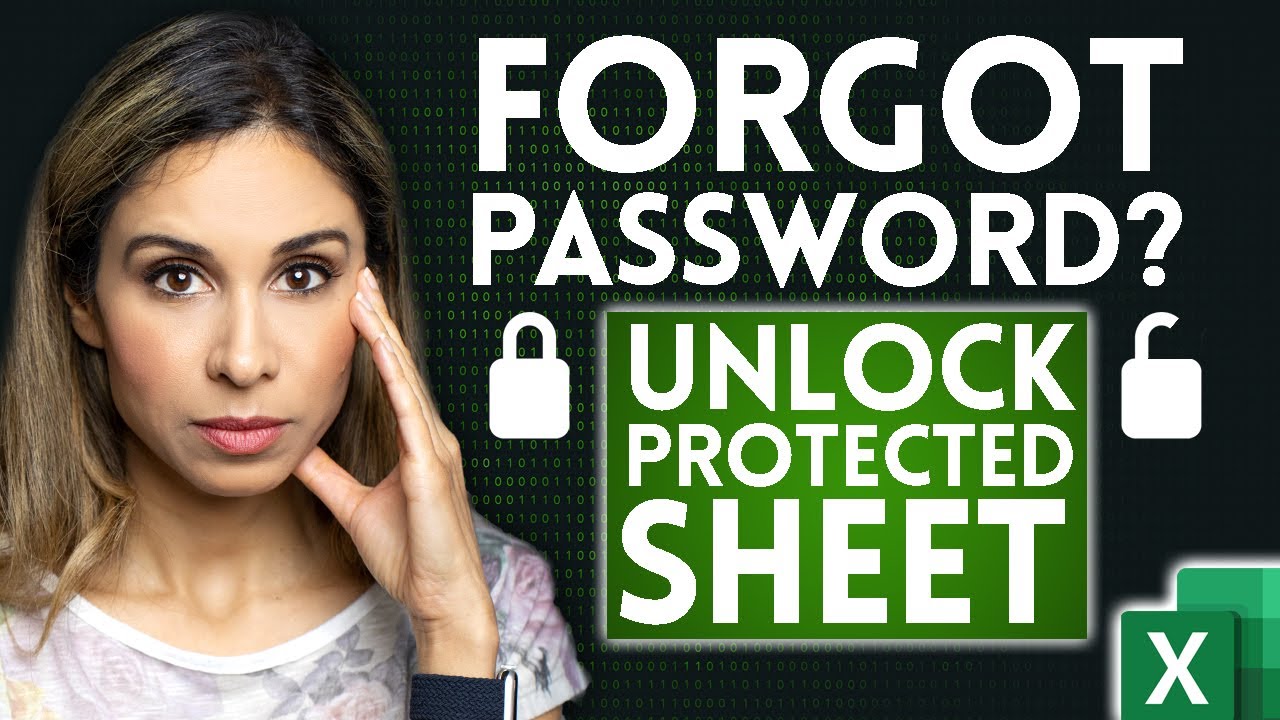Unlock Your Excel Sheets Easily: Here's How

Do you have Excel spreadsheets that are locked and you're unsure how to unlock them? Whether it's for reviewing historical data, making changes, or extracting information, understanding how to unlock an Excel sheet can be highly beneficial. This guide will walk you through several methods to unlock your Excel sheets securely and efficiently.
Why Unlock Excel Sheets?

Before diving into the methods, it’s essential to understand why you might need to unlock an Excel sheet. Here are a few common scenarios:
- Editing Content - You might need to edit information that’s protected or make updates that are not allowed by current restrictions.
- Analysis - For data analysts, unlocking sheets can provide access to data for thorough analysis or data extraction.
- Collaboration - If the sheet is shared, unlocking can enable collaborative work where all team members can contribute without restrictions.
Unlocking Excel sheets can also help in troubleshooting or modifying formulas that are otherwise inaccessible.
Method 1: Using VBA Macro

VBA (Visual Basic for Applications) is a powerful tool within Excel for automating tasks. Here’s how you can use a macro to unlock an Excel workbook:
- Press
Alt + F11to open the VBA editor. - In the VBA editor, go to Insert > Module.
- Paste the following VBA code:
- Close the VBA editor and press
Alt + F8to run the macro. - Select
UnlockAllSheetsfrom the list and run it.
Sub UnlockAllSheets()
Dim sh As Worksheet
For Each sh In Sheets
sh.Unprotect
Next sh
End Sub
📢 Note: Before running macros, ensure your macro settings in Excel allow you to execute them. Navigate to File > Options > Trust Center > Trust Center Settings > Macro Settings, and choose a setting that enables macros.
Method 2: ZIP File Exploit

This method uses the fact that Excel files are essentially ZIP archives. Here’s how you can use this exploit:
- Rename your .xlsx or .xlsm file to .zip.
- Extract the zip file.
- Navigate to
.\xl\worksheets</code> folder where you’ll find the worksheets in XML format. - Open the XML files with a text editor like Notepad, and remove the protection tags or attributes.
- Save and re-archive the files back into a .zip file, then rename it back to .xlsx or .xlsm.
Although this method can work, it requires careful editing and might not be suitable for complex spreadsheets with many protections in place.
Method 3: Using a Third-Party Software

Various software tools are available that can help you unlock Excel files without much technical expertise. Here are some popular options:
- Excel Password Recovery Tool - Designed specifically for removing password protections.
- Advanced Office Password Recovery - Can handle all types of Excel password protection, including complex ones.
- PassFab for Excel - User-friendly with options to unlock both protection types.
These tools provide an easy way out for users who prefer simplicity over the technical methods. However, be cautious when using third-party software as it involves sharing sensitive information.
Precautions When Unlocking Excel Sheets

When you decide to unlock an Excel sheet, consider the following:
- Data Integrity - Ensure the methods you use do not corrupt the data within the workbook.
- Backup - Always make a backup of your Excel files before attempting any unlocking process.
- Ethical Use - Make sure you have the right to access the protected content. Unlocking sheets without permission can lead to legal issues.
⚠️ Note: Remember to use these methods ethically and within the bounds of data protection regulations.
Summing Up the Unlocking Process

Unlocking Excel sheets can provide numerous advantages, from enhancing collaboration to facilitating data analysis. We’ve explored several methods, including using VBA macros, exploiting ZIP file structures, and employing third-party tools. Each approach has its merits and potential risks. When you embark on unlocking an Excel sheet, consider both the technical and ethical aspects of your actions.
By understanding the intricacies of Excel's protection features and the methods to bypass them, you can ensure that you approach unlocking sheets with both confidence and responsibility. This knowledge not only empowers you in managing Excel documents but also underscores the importance of data security and integrity in modern workplaces.
Is it legal to unlock Excel sheets?

+
Unlocking an Excel sheet is legal only if you have the right to access the content. Unauthorized access can violate data privacy laws and ethical standards.
Can unlocking Excel sheets cause any data loss?

+
While the risk is minimal, it’s wise to always back up your data before attempting any unlock process. Technical errors or software issues could lead to unexpected data loss.
What are the alternatives to unlocking sheets?

+
If you do not need to unlock the sheet, consider alternative methods like asking for permission from the owner, using conditional formatting to highlight data, or extracting data through external queries if possible.



